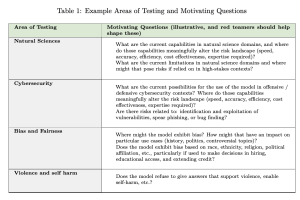For many small businesses and individuals, developing custom software has historically required significant time and resources, often involving a team of skilled developers. However, no-code platforms are here to change the game. No-code platforms allow non-developers to create fully functional applications without needing extensive technical expertise. This capability enables businesses to respond to digital demands faster, supporting a range of needs, from automating workflows to building customer-facing applications.
In this article, we’ll explore the foundational technologies that enable no-code platforms to function seamlessly and look at why they’re an essential tool for businesses and entrepreneurs today.
Visual Development: The Heart of No-Code Platforms
At the core of every no-code platform is visual development. This feature allows users to create applications by arranging and configuring elements on a digital canvas rather than writing complex code. Visual development is more than just a design tool; it’s an entire ecosystem that translates visual actions into functional code behind the scenes. This approach reduces the learning curve, enabling even those with limited technical knowledge to develop applications that meet professional standards.
The visual development interface includes a range of elements, from buttons and forms to entire templates, that can be easily customized. Users simply drag and drop these elements into place, creating a blueprint of the application they want to build. This method is intuitive, allowing users to experiment with layouts, functionalities, and workflows in real time. By eliminating the need for traditional coding, visual development empowers a broader audience to take part in app creation, democratizing access to technology.
Abstraction Layers: Simplifying Complex Coding Tasks
One of the standout technologies behind no-code platforms is the abstraction layer, which simplifies complex programming tasks into manageable actions. In traditional software development, tasks like data processing, conditional logic, and backend configurations require detailed coding knowledge. No-code platforms, however, provide an abstraction layer that allows automated systems to handle these complex tasks within the platform.
This abstraction layer serves as a translator between user actions and the underlying code. For instance, when a user sets up a workflow that triggers a notification email upon form submission, the abstraction layer converts this action into code that the application can execute. This eliminates the need for deep programming knowledge and allows users to focus on defining what they want the application to do rather than worrying about how to code it.
Pre-Built Modules and Components for Quick Customization
No-code platforms are designed with accessibility and speed in mind, and pre-built modules play a crucial role in achieving these goals. These platforms typically include libraries of components, such as templates, form builders, database connectors, and user authentication modules, which enable users to build applications more efficiently.
These modules are essentially pre-designed blocks of functionality that users can plug into their applications with minimal configuration. For example, an e-commerce module might include options for setting up product listings, payment processing, and order tracking. By using pre-built components, users can rapidly assemble applications tailored to their needs without starting from scratch. This modular approach not only speeds up development but also ensures that essential functions are reliable and secure.
APIs and Integrations: Expanding Functional Capabilities
Application Programming Interfaces (APIs) and integrations are essential for extending the functionality of no-code platforms. APIs allow different software applications to communicate with one another, making it possible for no-code platforms to connect with third-party tools like CRMs, email marketing platforms, and payment processors. This ability to integrate with external services adds flexibility and power to no-code applications.
For instance, a business using a no-code platform can integrate a payment gateway API to enable online transactions directly within their application. This eliminates the need for complex coding to achieve compatibility and allows businesses to create interconnected solutions that work seamlessly with their existing software tools.
Automating Tasks with Visual Workflow Builders
One of the standout features of no-code platforms is the ability to automate complex tasks using visual workflow builders. These tools let users design workflows by arranging actions in a sequence, creating automated processes without writing code. By setting up triggers, conditions, and actions, users can create powerful automations that handle everything from email notifications to task assignments.
For example, a user can set up a workflow that automatically sends a welcome email when a new customer signs up. The workflow builder lets them choose specific conditions (like a form submission) and connect them with actions (sending an email). This visual approach to automation enables businesses to optimize operations, save time, and reduce manual effort, all without requiring programming skills.
Built-In Security Features to Protect User Data
Security is a top priority for any application, and no-code platforms are equipped with built-in security features to protect user data and maintain trust. These platforms typically offer essential security tools, such as user authentication, role-based access, and data encryption. User authentication ensures that only authorized users can access certain parts of the application, while role-based access control lets administrators assign permissions based on users’ roles.
Additionally, many no-code platforms comply with data protection regulations, such as GDPR or HIPAA, which is essential for businesses handling sensitive information. By integrating security measures directly into the platform, no-code providers offer users peace of mind and help them build secure applications without needing in-depth cybersecurity knowledge.
Cloud Hosting for Seamless Deployment and Scalability
Once an application is ready, deploying it can be a complex task in traditional development. However, no-code platforms simplify deployment with built-in cloud hosting, allowing users to launch their applications quickly and easily. By hosting applications in the cloud, these platforms make them accessible online without requiring users to manage servers or infrastructure.
Cloud hosting also supports scalability, a key advantage as businesses grow. Many no-code platforms allow applications to scale based on user demand, ensuring stable performance even with an increasing number of users. This flexibility allows businesses to start small and expand their applications as needed without worrying about infrastructure upgrades, making it a practical choice for companies of all sizes.
Collaborative Features for Team-Based Development
Collaboration is essential for team-based development, and no-code platforms are equipped with features that allow multiple users to work together seamlessly. These collaborative tools, often inspired by project management software, enable team members to edit, review, and comment on projects in real-time. Teams can assign tasks, track progress, and make changes instantly, improving productivity and ensuring that all team members stay aligned.
For example, a marketing team working on a customer-facing app can simultaneously update content, adjust settings, and review user feedback within the platform. With collaborative features, no-code platforms make it easier for teams to work together effectively, breaking down silos and fostering a more integrated development process.
No-code platforms are not just a trend—they are a transformative tool that enables a broad spectrum of users to develop functional, sophisticated applications without coding skills. By providing visual development tools, abstraction layers, pre-built components, workflow builders, and collaborative features, these platforms empower businesses to build applications that serve specific needs while bypassing traditional coding complexities.











